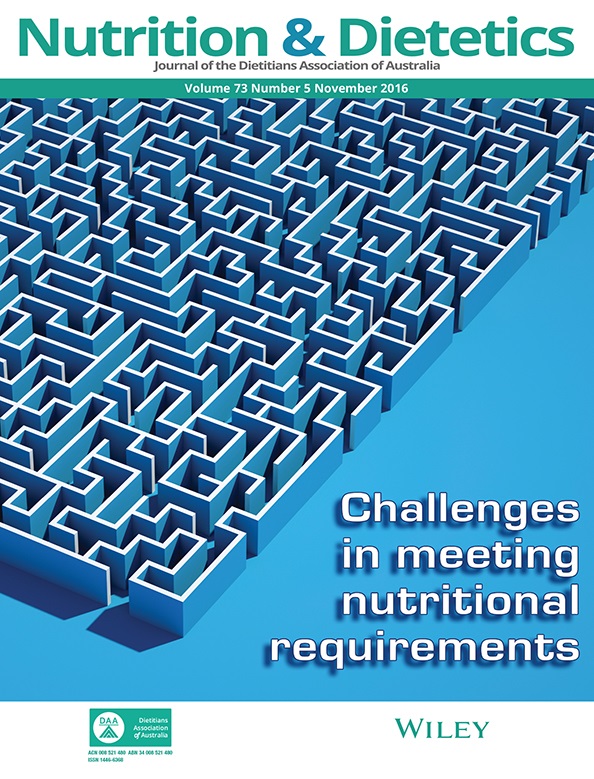Relationship between fasting plasma glucose levels and maternal food group and macronutrient intakes in pregnancy
Abstract
Aim
Increased maternal body mass index (BMI) has been consistently associated with elevated blood glucose levels during pregnancy. Studies to date investigating the relationship between maternal blood glucose levels and dietary intake have shown mixed results. We investigated the association between maternal fasting plasma glucose (FPG) levels and food group and macronutrient intakes in the first trimester of pregnancy, after adjustment for maternal bodyweight.
Methods
Women were recruited after sonographic confirmation of an ongoing singleton pregnancy in the first trimester. Dietary information was collected using the validated Willett Food Frequency Questionnaire. Maternal height and weight were measured and BMI calculated. Body composition was measured using advanced bioelectrical impedance analysis. FPG levels were obtained for women who were selectively screened with a 75 g oral glucose tolerance test.
Results
No associations were observed between maternal FPG levels and food group or macronutrient intakes but higher energy and starch intakes were found in obese subjects (P = 0.009 and P = 0.03 respectively). On univariate analysis, higher FPG levels were associated positively with higher maternal bodyweight, BMI, body fat, fat free mass and visceral fat (all P < 0.001). However, on multivariate regression analysis, higher FPG levels remained associated only with maternal BMI > 29.9 kg/m2 (OR 7.4, P = 0.01).
Conclusions
Our findings indicate that maternal BMI is the key determinant of maternal glycaemia. Interventions which focus on overall energy restriction and especially the limitation of dietary starch to optimise prepregnancy maternal bodyweight are likely to be useful in improving glycaemic control in higher risk pregnancies.




